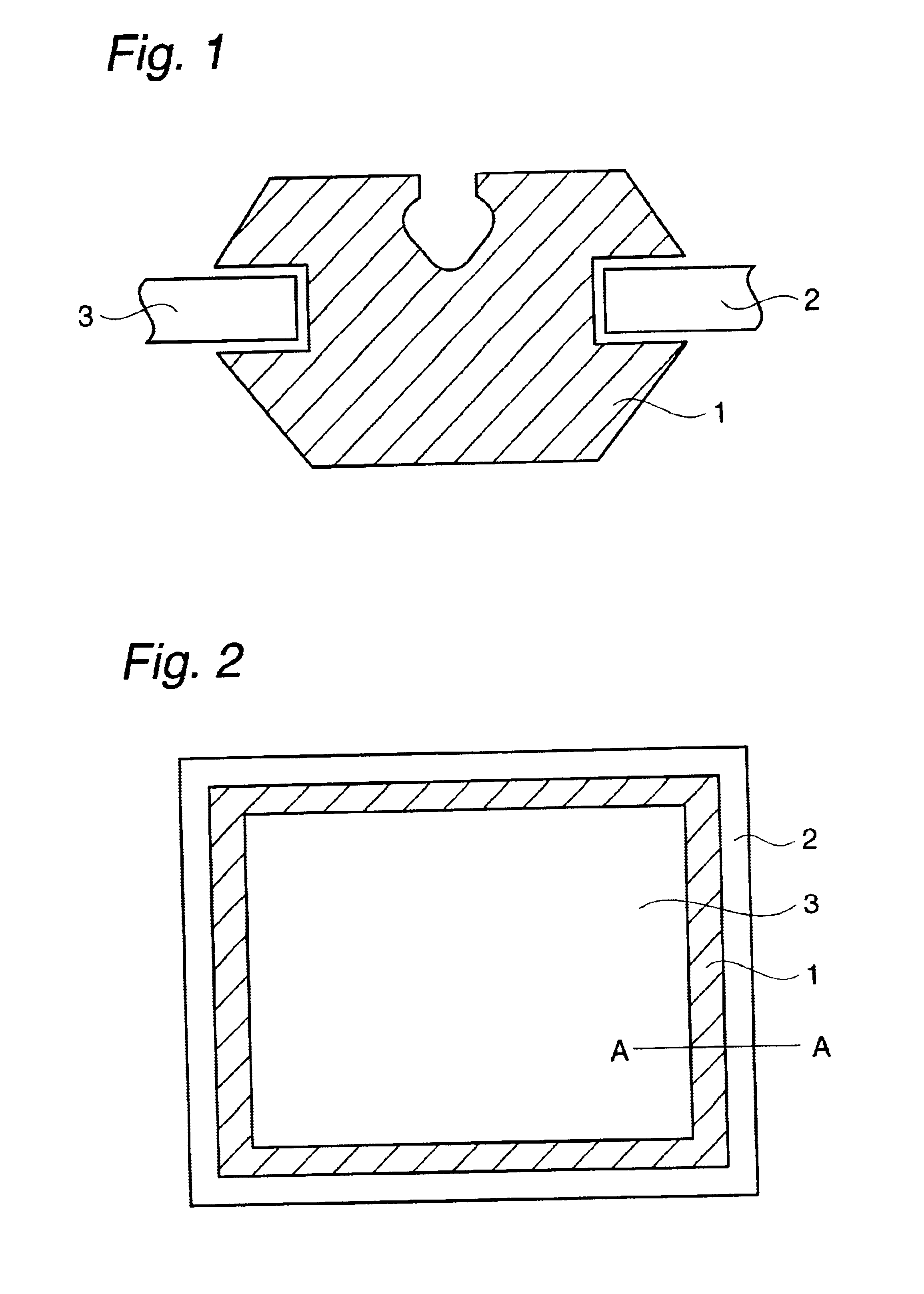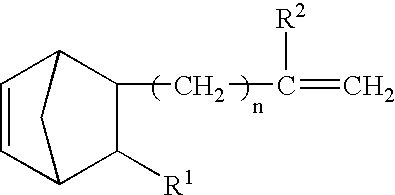Crosslinkable rubber compositions and use thereof
a crosslinking and rubber technology, applied in the field of crosslinkable rubber compositions, can solve the problems of marked reduction of scratch resistance, inferiority of silicone rubbers in compression set resistance, and production cost, and achieve excellent crosslinking rate, excellent compression set resistance, and excellent product quality.
- Summary
- Abstract
- Description
- Claims
- Application Information
AI Technical Summary
Benefits of technology
Problems solved by technology
Method used
Image
Examples
preparation example 1
Preparation of Ethylene / propylene / 5-vinyl-2-norbornene Random Copolymer Rubber (A-1)
In a 100-liter stainless steel polymerization reactor equipped with a stirring blade (number of stirring revolutions: 250 rpm), terpolymerization of ethylene, propylene and 5-vinyl-2-norbornene was continuously carried out. To the liquid phase in the reactor were fed hexane at a rate of 60 l / hr, ethylene at a rate of 3.7 kg / hr, propylene at a rate of 8.0 kg / hr and 5-vinyl-2-norbornene at a rate of 480 g / hr, and were further continuously fed hydrogen at a rate of 50 l / hr and as catalysts VOCl3 at a rate of 48 mmol / hr, Al(Et)2Cl at a rate of 240 mmol / hr and Al(Et)1.5Cl1.5 at a rate of 48 mmol / hr, through the side inlet of the reactor.
Through the copolymerization reaction under the above conditions, an ethylene / propylene / 5-vinyl-2-norbornene random copolymer rubber (A-1) was obtained as a homogeneous solution.
Thereafter, to the polymer solution continuously drawn out from the bottom of the reactor was a...
preparation examples 2 and 3
An ethylene / propylene / 5-ethylidene-2-norbornene random copolymer rubber (A-2) and an ethylene / propylene / dicyclopentadiene random copolymer rubber (A-3) having different properties were obtained in the same manner as in Preparation Example 1, except that the polymerization conditions were changed as shown in Table 1. Properties of the copolymer rubbers (A-2) and (A-3) are set forth in Table 1.
preparation example 4
Preparation of Ethylene / propylene / 5-vinyl-2-norbornene / 5-ethylidene-2-norbornene Random Copolymer Rubber (A-4)
In a 100-liter stainless steel polymerization reactor equipped with a stirring blade (number of stirring revolutions: 250 rpm), tetrapolymerization of ethylene, propylene, 5-vinyl-2-norbornene and 5-ethylidene-2-norbornene was continuously carried out. To the liquid phase in the reactor were fed hexane at a rate of 60 l / hr, ethylene at a rate of 3.0 kg / hr, propylene at a rate of 8.5 kg / hr, 5-vinyl-2-norbornene at a rate of 370 g / hr and 5-ethylidene-2-norbornene at a rate of 470 g / hr, and were further continuously fed hydrogen at a rate of 50N l / hr and as catalysts VOCl3 at a rate of 90 mmol / hr, Al(Et)2Cl at a rate of 420 mmol / hr and Al(Et)1.5Cl1.5 at a rate of 120 mmol / hr, through the side inlet of the reactor.
Through the copolymerization reaction under the above conditions, an ethylene / propylene / 5-vinyl-2-norbornene / 5-ethylidene / 2-norbornene random copolymer rubber (A-4) w...
PUM
| Property | Measurement | Unit |
|---|---|---|
| Temperature | aaaaa | aaaaa |
| Temperature | aaaaa | aaaaa |
| Temperature | aaaaa | aaaaa |
Abstract
Description
Claims
Application Information
 Login to View More
Login to View More - R&D
- Intellectual Property
- Life Sciences
- Materials
- Tech Scout
- Unparalleled Data Quality
- Higher Quality Content
- 60% Fewer Hallucinations
Browse by: Latest US Patents, China's latest patents, Technical Efficacy Thesaurus, Application Domain, Technology Topic, Popular Technical Reports.
© 2025 PatSnap. All rights reserved.Legal|Privacy policy|Modern Slavery Act Transparency Statement|Sitemap|About US| Contact US: help@patsnap.com



